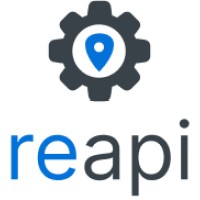Property Data via APIs, with Vincent Harris
Property data is a topic we’re digging deep on in 2024. We wanted to tap a member of the GEM Diamond community, RealEstateAPI‘s Co-Founder Vincent Harris, for his take on the state of property data and what an API approach looks like.
Without further ado, here’s a short Q&A we conducted via email:
How would you describe RealEstateAPI.com (REAPI) to someone not familiar with proptech? And what problem are you solving?
The team at Stripe has a great saying: “Most tech companies are building cars. We’re building roads.” Their goal is to become the financial highway of the internet. We’ve taken a similar approach. But it’s not roads we’re building. It’s an assembly line. Our Smart APIs offer the building blocks that SaaS companies need to build amazing products–without breaking the bank. We typically save dev shops 50% off the cost of traditional data procurement.
 Any proptech application developer with a vision for a sleek high-performance app knows that at the heart of it, there has to be a powerful data engine. They’ll need to harness enormous amounts of property data, manipulate it, perform calculations, then render it into a consumer facing application– all at lightning speed. And without siphoning resources from other parts of the application. This is no small feat. But this is what our API suite makes possible. Every month we provide data on tens of millions of properties for some of the most popular real estate apps on the market.
Any proptech application developer with a vision for a sleek high-performance app knows that at the heart of it, there has to be a powerful data engine. They’ll need to harness enormous amounts of property data, manipulate it, perform calculations, then render it into a consumer facing application– all at lightning speed. And without siphoning resources from other parts of the application. This is no small feat. But this is what our API suite makes possible. Every month we provide data on tens of millions of properties for some of the most popular real estate apps on the market.
Where did this idea come from?
We started out as SaaS builders ourselves. In 2015, we built a SFR dispositions platform that was white labeled by one of the biggest residential investors in the country. A few years later, we built a lead generation platform that was the first of its kind in the REI space. It had a very robust data crunching capability that let users fetch property (and property owner) details dynamically. Building those products required us to learn data engineering deeply.
The #1 revelation from that period was that old school property data APIs were too slow and not nearly flexible enough. So, we had to build our own data warehouse and maintain data pipelines to keep our data current. It was a painful process. It was also expensive since we had to enter pricey licensing arrangements with large data aggregators.
It was so painful, in fact, that we decided to shift our focus to solving this issue for other SaaS companies. The idea for REAPI was born.
Why is wrangling data so painful today?
A hypothetical example may illustrate why the process is so brutal…
Let’s say there’s a founder who wants to launch a new A.I. powered home listing service. The platform’s special sauce is that it’s going to display not only the seller’s asking price, but the expected appreciation of the house 1, 3 and 5 years out from the current transaction. She’s got an incredible algorithm that she believes can generate these projections down to the individual rooftop. Her app will display those forecasts with beautiful data visualizations that can be modified dynamically as users enter different assumptions.
To pull this off, our ambitious developer will have to harvest historical sales data nationwide to train her model. But sale prices aren’t enough. A good model will also factor in property taxes and mortgage rates.
Our brave founder soon discovers she needs data from county recorders and tax assessors’ offices nationwide. She then learns that this data is traditionally sourced from a cartel of large data aggregators and in order to get it, she’s gotta pay a huge licensing fee.
The more daunting realization is that even if she buys a license, the data is not ‘plug and play’ ready. It’s raw. It needs to be transformed and normalized and placed into a storage vault that she maintains. To get it out of that vault and into her app, she’ll need to chop the data into tiny query-friendly bits, and build an API layer. All of a sudden, our hero is mired in the weeds of data warehousing and giving short shrift to the company’s actual mission.
We’ve seen companies pivot and even fold because they couldn’t conquer the data challenge.
I notice your hypothetical example is an AI platform. It seems like A.I. is all anyone is talking about these days. How does RealEstateAPI help companies take advantage?
A model is no good without a corpus of data to train on. We make that process simple for AI platforms by allowing them to use our data warehouse (155M+ US properties) for training.
If this hypothetical founder came to us, we’d offer to create a cordoned off environment within our warehouse where she could train against our data but also bring in add’l relevant data sets. We could then serve up the results via an API endpoint.
That output, along with the standard foundational data her app needs (property specs and homeowner info) could then be served up for her app instantly. Our process allows her to focus on optimizing that – and getting her model out into the world.
That’s what she should be focusing on, not the gnarly details of ETL. Leave that to us.


Sorry, the comment form is closed at this time.